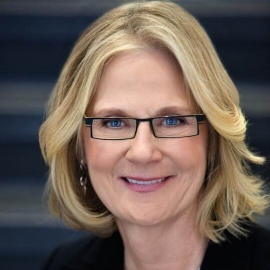There are a number of excellent online glossaries and resources that are much more extensive than what we have pulled together here for the purposes of this journey. Consider consulting these glossaries as you continue your own personal journey in Anti-Racism and Allyship.
A
Ally: Someone who makes the commitment and effort to recognize their privilege (based on gender, class, race, sexual identity, etc.) and work in solidarity with oppressed groups in the struggle for justice. Allies understand that it is in their own interest to end all forms of oppression, even those from which they may benefit in concrete ways. In the field of social justice studies, the idea of being an ally to another person or group of people has become a key concept in examining issues of oppression and privilege. When people form an alliance to speak out against prejudice and discrimination, people who are the target of that prejudice are not the only ones who benefit. (Read more here.)
Anti-Racist: A conscious decision to make frequent, consistent, equitable choices daily. These choices require ongoing self-awareness and self-reflection as we move through life. In the absence of making antiracist choices, we (un)consciously uphold aspects of white supremacy, white-dominant culture, and unequal institutions and society. Being racist or antiracist is not about who you are; it is about what you do. (National Museum of African American History and Culture, Talking about Race)
D
DEI: Diversity, Equity, and Inclusion
- Diversity: The range of human differences, including but not limited to race, ethnicity, gender, gender identity, sexual orientation, age, social class, physical ability or attributes, religious or ethical values system, national origin, and political beliefs.
- Equity: A measure of fair treatment, opportunities, and outcomes across race, gender, class, and other dynamics.
- Inclusion: Refers to the intentional, ongoing effort to ensure that diverse individuals fully participate in all aspects of organizational work, including decision-making processes. It also refers to the ways that diverse participants are valued as respected members of an organization and/or community. (University of Washington Racial Equity Glossary)
I
Implicit Bias: Also known as unconscious or hidden bias, implicit biases are negative associations that people unknowingly hold. They are expressed automatically, without conscious awareness. Many studies have indicated that implicit biases affect individuals’ attitudes and actions, thus creating real-world implications, even though individuals may not even be aware that those biases exist within themselves. Notably, implicit biases have been shown to trump individuals’ stated commitments to equality and fairness, thereby producing behavior that diverges from the explicit attitudes that many people profess. (The Kirwan Institute for the Study of Race and Ethnicity, Implicit Bias Review)
Implicit Association Test (IAT): The Implicit Association Test (IAT) measures attitudes and beliefs that people may be unwilling or unable to report. The IAT may be especially interesting if it shows that you have an implicit attitude that you did not know about. For example, you may believe that men and women are equally associated with science, yet your automatic associations could show that you (as many others) associate men with science more than you associate women with science. In addition, when you take the IAT, you will receive feedback about the strength of your implicit preference based on how much faster you respond to Flowers + Good / Insects + Bad versus Insects + Good / Flowers + Bad (for example). As you consider your results, remember that the IAT shows biases that are not necessarily endorsed and that may even be contradictory to what one consciously believes.
Intersectionality: A prism to see the interactive effects of various forms of discrimination and disempowerment. It looks at the way that racism, many times, interacts with patriarchy, heterosexism, classism, xenophobia—seeing that the overlapping vulnerabilities created by these systems actually create specific kinds of challenges. (Critical race theorist Kimberlé Williams Crenshaw to them. magazine)
M
Microaggression: Brief, commonplace, subtle, or blatant daily verbal, behavior, or environmental indignities, whether intentional or unintentional, that communicate hostile, derogatory, or negative racial slights and insults toward people of color. (University of Washington Racial Equity Glossary)
P
Privilege: Unearned access to resources only readily available to some people as a result of their advantaged social group membership (Scripps College)
W
White Privilege: Refers to the unquestioned and unearned set of advantages, entitlements, benefits, and choices bestowed on people solely because they are white. Generally white people who experience such privilege do so without being conscious of it. (“White Privilege: Unpacking the Invisible Knapsack” by Peggy McIntosh)
White Supremacy: A form of racism centered upon the belief that white people are superior to people of other racial backgrounds and that whites should politically, economically, and socially dominate non-whites. While often associated with violence perpetrated by the KKK and other white supremacist groups, it also describes a political ideology and systemic oppression that perpetuates and maintains the social, political, historical, and/or industrial White domination. (Race Forward, “Race Reporting Guide”)


